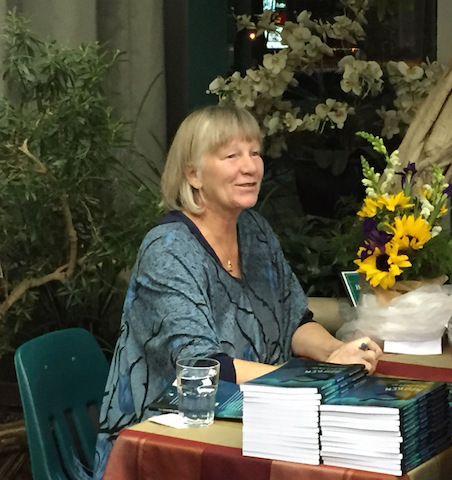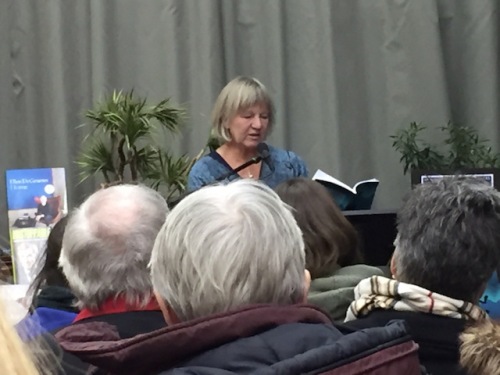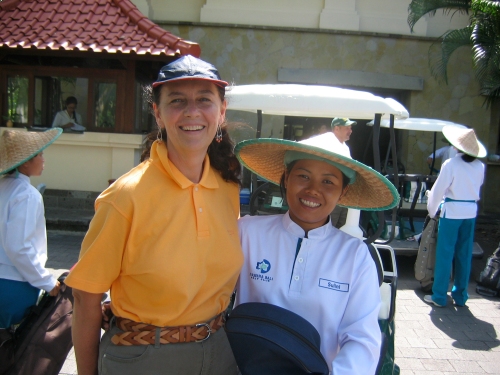I loved the photographs Carol Shields included in Stone Diaries. After I read the book I carefully studied the photos trying to link characters in the story to people in the photographs.

I felt the same way about the photos Gabriele Goldstone includes in her new novel Broken Stone. I studied the photographs for a long time after I finished the book, mentally trying to connect the people in the pictures with the characters in the story they inspired.
 Broken Stone is the second in a series based at least in part on the experiences of author Gabriele Goldstone’s own mother in Ukraine, Siberia and East Prussia.
Broken Stone is the second in a series based at least in part on the experiences of author Gabriele Goldstone’s own mother in Ukraine, Siberia and East Prussia.
I went to the launch of Broken Stone at McNally Robinson on Thursday and thanks to Gabriele spent the better part of my Saturday reading her book. I had already finished Red Stone the first book in the series and was anxious to find out what awaited its heroine Katya Halter.
 Although Katya escapes communist Russia early on in the book, more challenges await her at the home of her aunt and uncle in Prussia. While the book tells Katya’s personal story it is set against the backdrop of Hitler’s growing popularity and rise to power and so we learn about that period in German history as we read. The book ends with Katya leaving her family and striking out on her own. What adventures lie ahead? I guess I will have to wait for the third book in the series to find out.
Although Katya escapes communist Russia early on in the book, more challenges await her at the home of her aunt and uncle in Prussia. While the book tells Katya’s personal story it is set against the backdrop of Hitler’s growing popularity and rise to power and so we learn about that period in German history as we read. The book ends with Katya leaving her family and striking out on her own. What adventures lie ahead? I guess I will have to wait for the third book in the series to find out.
Broken Stone is targeted for young people and would be a great way for the many families in Canada who have post World War I roots in Ukraine or Germany to give their children and grandchildren an interesting insight into their family history.
Other posts……




 Other pieces in my collection include….
Other pieces in my collection include….

















 The Wendat were one of the most important suppliers of furs to the French exchanging their furs for goods from the French.
The Wendat were one of the most important suppliers of furs to the French exchanging their furs for goods from the French. 
 That’s the starting point of This Will Lead to Dancing, a drama by the
That’s the starting point of This Will Lead to Dancing, a drama by the  We hear from Henry, the church janitor, who tells a moving story about his son who died from AIDS. Henry rejected his son when he announced his homosexuality and now is remorseful about that decision. At the time, several decades before, he felt he needed to choose between his own faith and accepting his son.
We hear from Henry, the church janitor, who tells a moving story about his son who died from AIDS. Henry rejected his son when he announced his homosexuality and now is remorseful about that decision. At the time, several decades before, he felt he needed to choose between his own faith and accepting his son.  We meet Sam’s parents. Although they love and support their daughter they wish she’d kept her sexuality a secret and not ‘come out’ to the church community. They are wise enough to realize the heartache that will result for their daughter. They know how important her faith is to her, and they realize the church will no longer be able to embrace her fully now that she has shared her secret.
We meet Sam’s parents. Although they love and support their daughter they wish she’d kept her sexuality a secret and not ‘come out’ to the church community. They are wise enough to realize the heartache that will result for their daughter. They know how important her faith is to her, and they realize the church will no longer be able to embrace her fully now that she has shared her secret.  A local television station interviews Sam and Alex. Soon the story about their hunger strike goes viral, drawing national attention. The evening I saw the play I came home to a
A local television station interviews Sam and Alex. Soon the story about their hunger strike goes viral, drawing national attention. The evening I saw the play I came home to a  Perhaps the most humorous and tender moments of the play emerge when Sam, weak from hunger, has a dream where Menno Simons, the founder of the Mennonite Church visits her. Menno is bewildered about the homosexuality question. The word homosexuality isn’t even in the Bible. We find out that’s because the word was first used in a 1946 English translation of scripture. Menno also wonders why a church governing body is dictating what people must believe. That isn’t the Anabaptist way.
Perhaps the most humorous and tender moments of the play emerge when Sam, weak from hunger, has a dream where Menno Simons, the founder of the Mennonite Church visits her. Menno is bewildered about the homosexuality question. The word homosexuality isn’t even in the Bible. We find out that’s because the word was first used in a 1946 English translation of scripture. Menno also wonders why a church governing body is dictating what people must believe. That isn’t the Anabaptist way. The play ends with Menno and Sam dancing together. They stumble and trip and hurt each other at first, but eventually they learn how to move together in harmony as they dance and sing the hymn We are People of God’s Peace. It is a beautiful metaphor for the hope that someday people will be able to be honest and open about both their sexuality and their spirituality without having to leave the Mennonite Church.
The play ends with Menno and Sam dancing together. They stumble and trip and hurt each other at first, but eventually they learn how to move together in harmony as they dance and sing the hymn We are People of God’s Peace. It is a beautiful metaphor for the hope that someday people will be able to be honest and open about both their sexuality and their spirituality without having to leave the Mennonite Church.



 I bumped into Johannes Gutenberg at the
I bumped into Johannes Gutenberg at the 

 A businessman named Johann Fust loaned Gutenberg the funds to build his printing press. In 1455, Fust took Gutenberg to court, claiming Gutenberg had mishandled his loan. The court ruled in favor of Fust, leaving Gutenberg bankrupt. But guess who was one of the witnesses during the court case? Johannes’ former assistant Peter Schoeffer, who proceeded to take over Gutenberg’s former shop and help Fust run the printing press and turn it into a profitable business.
A businessman named Johann Fust loaned Gutenberg the funds to build his printing press. In 1455, Fust took Gutenberg to court, claiming Gutenberg had mishandled his loan. The court ruled in favor of Fust, leaving Gutenberg bankrupt. But guess who was one of the witnesses during the court case? Johannes’ former assistant Peter Schoeffer, who proceeded to take over Gutenberg’s former shop and help Fust run the printing press and turn it into a profitable business. 







